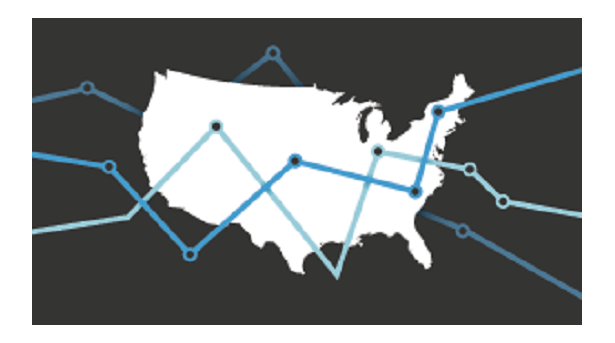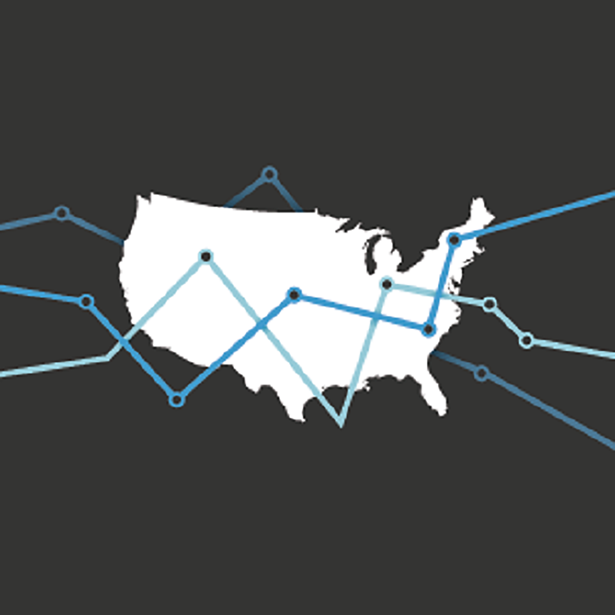States' Recovery From Great Recession Is Slow and Uneven
Note: These data have been updated. To see the most recent data and analysis, visit Fiscal 50
More than five years after the Great Recession officially ended in June 2009, states’ financial conditions continue to improve. But most states have yet to return to prerecession performance on some key measures of fiscal health. Even after states overcome the effects of the downturn, additional challenges await them.
An examination of 50-state data in The Pew Charitable Trusts’ Fiscal 50: State Trends and Analysis, an online resource, shows that recovery varies widely from state to state. Tax revenue, employment rates, and reserve funds still are lower in a majority of states than they were before they plunged during the recession. While those measures are moving in the right direction, other pressures are building.
For some states, one challenge is unfunded pension and retiree health care costs for public workers. In 44 states, these long-term retirement obligations are larger than the public debt from bond issuances and other state borrowing.
An issue for all states is the prospect of further belt-tightening by the federal government, which provides nearly $1 in $3 of state revenue. States use federal dollars for a range of programs, particularly health care, education and training, and transportation and other infrastructure.
Why does state fiscal health matter?
All of these factors affect the fiscal health of state governments, which deliver critical services such as health care for the needy, education, transportation, and public safety. State finances also matter because of their impact on the U.S. economy. State spending and investment account for 3.4 percent of the nation’s economic output, and states provide about one-third of local governments’ budgets.
What is Fiscal 50?
Pew’s Fiscal 50 provides sortable 50-state data and analysis on key fiscal, economic, and demographic indicators that affect states’ fiscal health. Updated regularly, this online resource highlights trends, allows 50-state comparisons, and offers unique insights into the finances of state governments. Each indicator drills down into one of five core areas: revenue, spending, economy and people, long-term costs, and fiscal policy. Fiscal 50 is selective rather than comprehensive in choosing indicators. Each indicator is designed with states’ long-term financial well-being in mind, rather than the short-term perspective of what it takes to balance the budget each year.
Here are seven key takeaways from Fiscal 50’s data and analysis:
- Tax Revenue. Nationally, total state tax revenue has recovered from its plunge during the Great Recession. But on a state-by-state basis, the recovery is uneven. Adjusted for inflation, tax collections in 29 states had not fully rebounded to their previous peak levels by the second quarter of 2014.
- Tax Revenue Volatility. Unexpected revenue swings can confound policymakers’ efforts to balance state budgets. A first-of-its-kind look at tax revenue volatility—minus the effects of tax policy changes—shows that Alaska’s tax revenue fluctuated the most and South Dakota’s the least over the past 20 years. Corporate income taxes and severance taxes on oil and minerals were consistently more volatile than other major state taxes.
- Federal Share of State Revenue. After reaching record highs in the wake of the Great Recession, the share of states’ revenue coming from the federal government fell in fiscal year 2012 as the federal stimulus program largely ended and states’ own revenues rose. But for the fourth straight year, federal dollars still made up a bigger portion of states’ money than at any other time since at least 1961. In fiscal 2012, Mississippi had the largest percentage of revenue from federal dollars, 45.3 percent, and Alaska had the smallest, 20.0 percent.
- Change in State Spending. The expiration of federal stimulus aid affected state spending. Total expenditures of state and federal funds combined declined from a year earlier because increased spending from states’ own dollars did not make up for the sharp drop in federal aid. Still, when measured as a share of the economy, total state spending was higher than during much of the past two decades.
- Employment to Population Ratio. About 76 out of every 100 Americans in their prime working years had a job in fiscal 2014, compared with nearly 80 out of every 100 in 2007, before the recession. The decline in the employment rate translates to lower tax revenue for states and increased expenses for assistance programs for the jobless.
- Debt and Unfunded Retirement Costs. Although states pass balanced budgets, some spending commitments that will not come due for years go unpaid. Among these are long-term obligations for public debt and unfunded pension and retiree health care benefits. As of fiscal 2012, unfunded pension benefits were the dominant liability in 35 states, bigger than either debt or unfunded retiree health care costs.
- Reserves and Balances. Only 16 states estimated that their financial cushions would be restored to prerecession levels by the end of fiscal 2014. Although states’ rainy day reserves and general fund balances collectively have grown since the end of the recession, four states expected to have less than five days’ worth of operating costs set aside for unexpected expenses.
For most indicators, Fiscal 50 allows users to compare their states with others and to a national benchmark, providing insights and perhaps raising questions in state capitals about why states lead or trail their peers. This resource will be updated when new data are available, and more indicators and analysis will be added.
Fiscal 50 builds on data from the 50 states obtained from U.S. government agencies, the Nelson A. Rockefeller Institute of Government, the National Association of State Budget Officers, the National Governors Association, the National Conference of State Legislatures, and Pew’s research. Differences can be expected between certain fiscal data used in this analysis and data compiled and used by states for their own budgeting purposes. Data featured in Fiscal 50 are the best available for drawing fair comparisons across states.








